Is Xiao Zhan’s Scholar Look in The Legend of Zang Hai Historically Accurate?

The new teaser for the historical drama The Legend of Zang Hai has just dropped, and Xiao Zhan’s costumes across different time periods are drawing a lot of attention. One look in particular stands out: his Ming Dynasty scholar attire. It’s a refreshing change and a great example of how today’s dramas are starting to take traditional Chinese clothing and culture more seriously.
Ⅰ. The Lanshan: Traditional Robe of Chinese Scholars
In The Legend of Zang Hai, Xiao Zhan wears a lanshan with a round collar—a style that was especially popular during the Song and Ming dynasties. The term “round collar” refers to the shape of the neckline, and the lanshan (襕衫) itself was a signature outfit for scholars, Confucian students, and members of the educated class of the time.
Xiao Zhan also wears a rujin, a traditional headscarf “rujin (儒巾)” worn by Confucian scholars, completing the look. This ensemble wasn’t just everyday wear; it was also commonly used in Confucian ceremonies at local schools, where it was worn by dancers performing the solemn Six-Rank Ritual Dance (六佾舞), held in honor of Confucius.
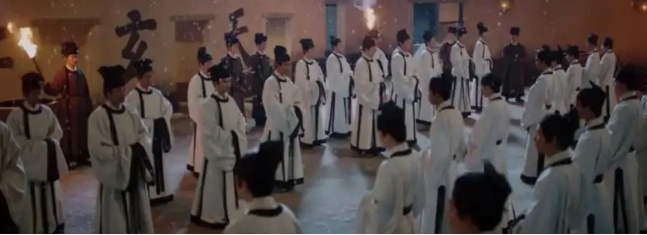
While the lanshan robe evolved between the Song and Ming dynasties, its defining feature—the decorative horizontal hem known as the lan (襴)—remained consistent. According to the History of the Song Dynasty, the lanshan was typically made from plain white cotton, emphasizing the neat, disciplined appearance expected of scholars. The robe featured a round collar, wide sleeves, pleats at the waist, and a distinct horizontal hem that extended below the waist like a skirt. ↓ ↓ ↓

This style was worn by scholars of various ranks, including jinshi (those who passed the highest level of imperial exams), students of the Imperial Academy (Guozi Jian), and local scholars from regional schools.The black decorative strip below the waist, known as the horizontal lan (横襕), serves as the lower section of the robe.
Aesthetically, the robe often included the round collar, wide cuffs, hem, and seams, creating a balanced and orderly visual design—an embodiment of the Confucian values of structure and discipline that scholars were meant to uphold.
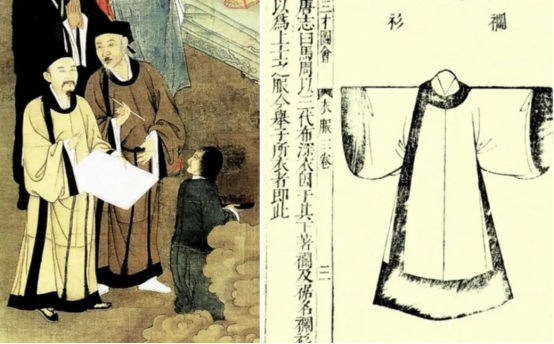
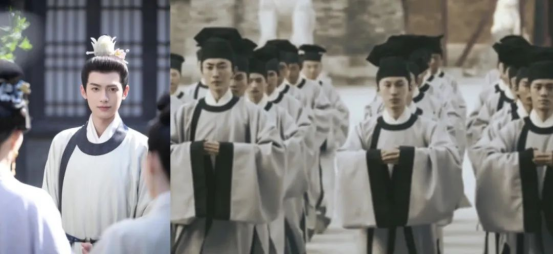
Ⅱ. Lanshan in the Song Dynasty
Based on historical paintings, Song Dynasty lanshan weren’t limited to a single look in daily life. While white was standard for formal occasions, other muted colors like off-white or brown were also worn casually. However, blue was not used, and the robe’s edges were always trimmed in a dark, almost black color known as zao bian (皁边).
Unlike later styles, Song lanshan robes didn’t have side slits. Instead, pleats were added at the sides where the lower decorative panel was attached to the body of the robe.
As for headwear, scholars typically wore rujin (Confucian headscarves), but other styles like the Dongpo scarf were also seen. There wasn’t a strict standard for hats or scarves—choices often depended on the setting or personal preference. In earlier costume dramas, Song Dynasty scholar robes were more commonly featured, while Ming Dynasty styles were rarely seen.
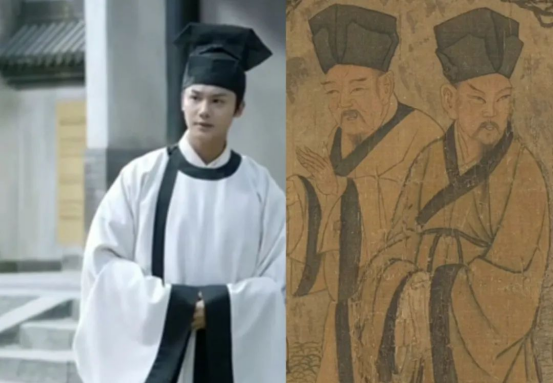
Ⅲ. Lanshan in the Ming Dynasty
In the Ming Dynasty, lanshan robes were typically made in darker colors, with deep blue being the most common. In the 24th year of the Hongwu reign (1391), Emperor Taizu of Ming personally set the official dress code for scholars. At that time, the robe was made from light jade-colored silk, with wide sleeves, black edging, a black sash at the waist, and a soft hat with hanging ribbons. This full ensemble was known as a lanshan.
It was only later that the headwear changed to the more familiar rujin (儒巾, Confucian scarf), and the Chinese dress color shifted to dark blue—while keeping the black trim on the sleeves and edges. Because of this distinctive look, it came to be commonly known as the “blue robe” (lan shan).
Due to the similar silhouette of lanshan robes from the Song and Ming dynasties, it’s easy for people today to confuse the two styles.
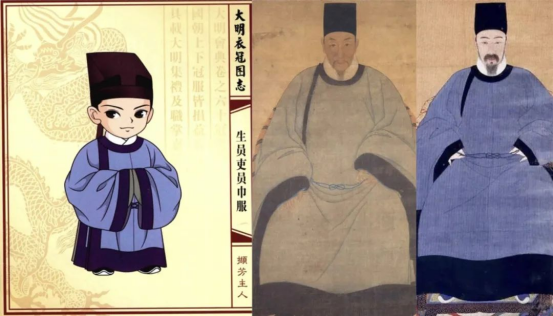
During the Ming Dynasty, the lanshan robe became more strictly regulated by social class—ordinary citizens were not allowed to wear it at will. In the early Ming period, the design of the lanshan also began to diverge significantly from its Song predecessor.
One of the most noticeable changes was the introduction of side slits and additional outer panels at the hem, which were absent in the Song version. This detail—the presence or absence of side slits and outer flaps—is one of the key differences between Song and Ming styles.
The rujin (Confucian headscarf) worn with the robe also had a distinctive shape. It sat lower in the front and higher at the back, with the top forming a slanted plane and two soft fabric ribbons hanging down from the rear.
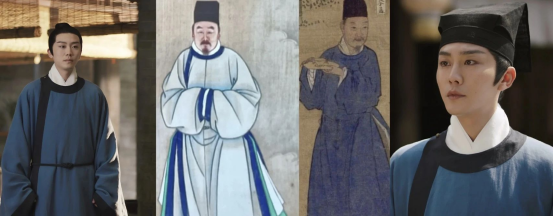
As time went on, especially by the mid to late Ming period, the color palette of lanshan robes became more varied, though shades of blue remained the dominant choice. These blue tones helped convey a sense of formality, dignity, and scholarly decorum.
In contrast, many older costume dramas have portrayed scholar-style outfits with a more theatrical or stylized approach. These often mixed elements from different dynasties or cultural styles—such as pairing a Han-style tall hat with a round-collar robe and a cross-collar outer wear. This outfits felt like a patchwork of mismatched elements, lacking the true spirit of a Confucian scholar.
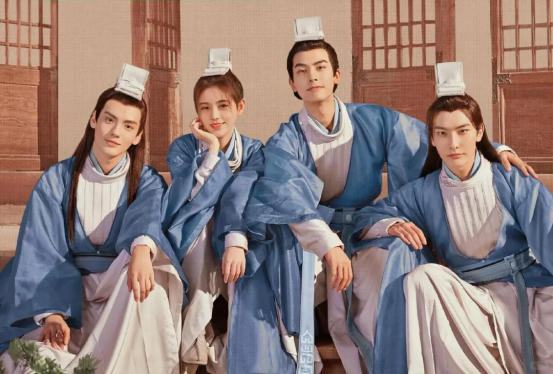
Authentic scholars and students of Confucian learning, however, were expected to embody the ideals of humility, resolve, and virtue. The deep blue robe (lan shan) wasn’t just a garment—it symbolized a student’s unshakable ambition and moral refinement.
Summary
This year’s CCTV Lantern Festival Gala featured a Hanfu performance titled Yi Li Cheng Ren (means coming-of-age ceremony), where performers wore the classic round-collar lanshan—a look many viewers instantly recognized as traditionally scholarly.
In fact, some members of Hanfu communities jokingly refer to the lanshan as “China’s own academic gown.” It’s easy to see why—once someone puts it on, they instantly take on the air of a learned young scholar.
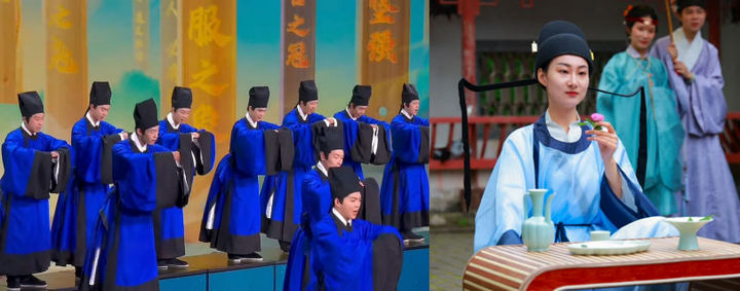
As historical research continues to deepen and costume design standards improve, we’re seeing a welcome shift in period dramas toward more historically accurate and culturally respectful portrayals. Let’s look forward to more thoughtfully crafted, visually rich productions in the years ahead!
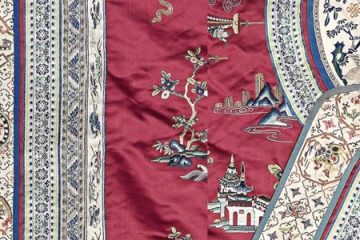
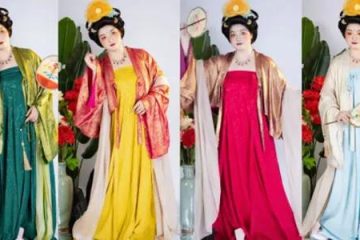
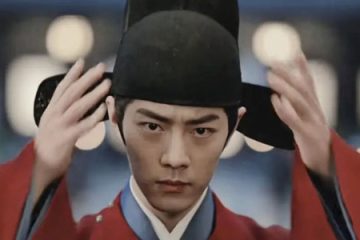
0 Comments